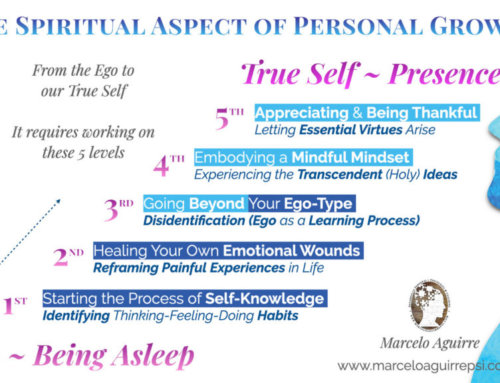The French writer André Malraux once asked an old priest what he had learned about human nature after having spent a lifetime hearing people’s confessions. The priest replied: “Fundamentally, there are no grown-ups.” While this is a bleak view of humanity there is some truth in it.
Our ego is often younger than the rest of us. Some of our adult perceptions are filtered through eyes that see the world as it once was. Months after people from small towns move to big cities, they may grow tense and nervous at the sound of ambulance sirens. That’s because in a small town, the ambulance only ever comes for someone you know. In our Enneagram trance, we do something similar, reacting to a past world while living in the present.
Sigmund Freud once defined ego as “the reality principle,” meaning that our ego keeps track of who we are and what is real. The irony is that our ego’s worldview was formed in childhood yet we carry this early understanding of life forward in time. The part of us that once defined reality can now distort it, creating a kind of “unreality principle.”
An early explorer of the Antarctic was crossing a sea of ice one day when a blizzard struck suddenly. He was forced to build an igloo and take refuge from a storm that proceeded to blow hard for a couple of weeks.
After a few days of safety in the igloo, he began to notice that its inner walls seemed closer. At first, he dismissed this perception as a hallucination but gradually he realized it was true; the walls of his igloo were swelling and the igloo’s structure was gradually closing in around him.
The explorer finally realized that the moisture from his breath was forming into thin accumulating layers of ice on the walls. Each time he exhaled, the icy cold caused his breath to freeze, making the igloo’s walls a little thicker. The walls would eventually thicken until there wasn’t room for his body. His defensive shelter was slowly turning into a coffin.
The Enneagram describes nine kinds of “inner igloos,” psychic shelters that we built to survive the storms of childhood. The irony is that what once saved us is now the problem. The defenses that at first sheltered us are now exactly what get in our way. While it originally made perfect sense to take refuge, now we protect ourselves from the storms of our memory, often by subtly reproducing them. Now, in our personality trance, we create both the problem and the defense, the storm and the igloo. Paradoxically, our chief means of preventing pain is to recreate it. Defended against the past, we’re overdefended in the present.
I was once at a workshop where an eccentric man named David wore a T-shirt that read, “Don’t call me Bob!” Apparently “Bob” was David’s hated childhood nickname although no one would have known this without the T-shirt’s message. Predictably, someone was unable to resist calling him “Bob.” Just as predictably, David exploded in anger and stormed away.
While David’s behavior was unusually self-fulfilling, we all do something similar when we enter new circumstances and distort them with our trance and stories. We create familiar storms to justify our defenses; we set ourselves up and make the present seem like the past, partly to have a rationale for doing what we do best.
Observing the more rigid workings of her Enneagram style, one woman joked, “If my present career doesn’t work out, I can always find a job making cages.” Sometimes our ego’s defenses can seem like an elaborate, self-defeating cage built to ward off the mystery of living. But we acquired our defenses for good reasons and may still feel that we have good reasons to keep them. Or not.
© 2021 by Tom Condon




